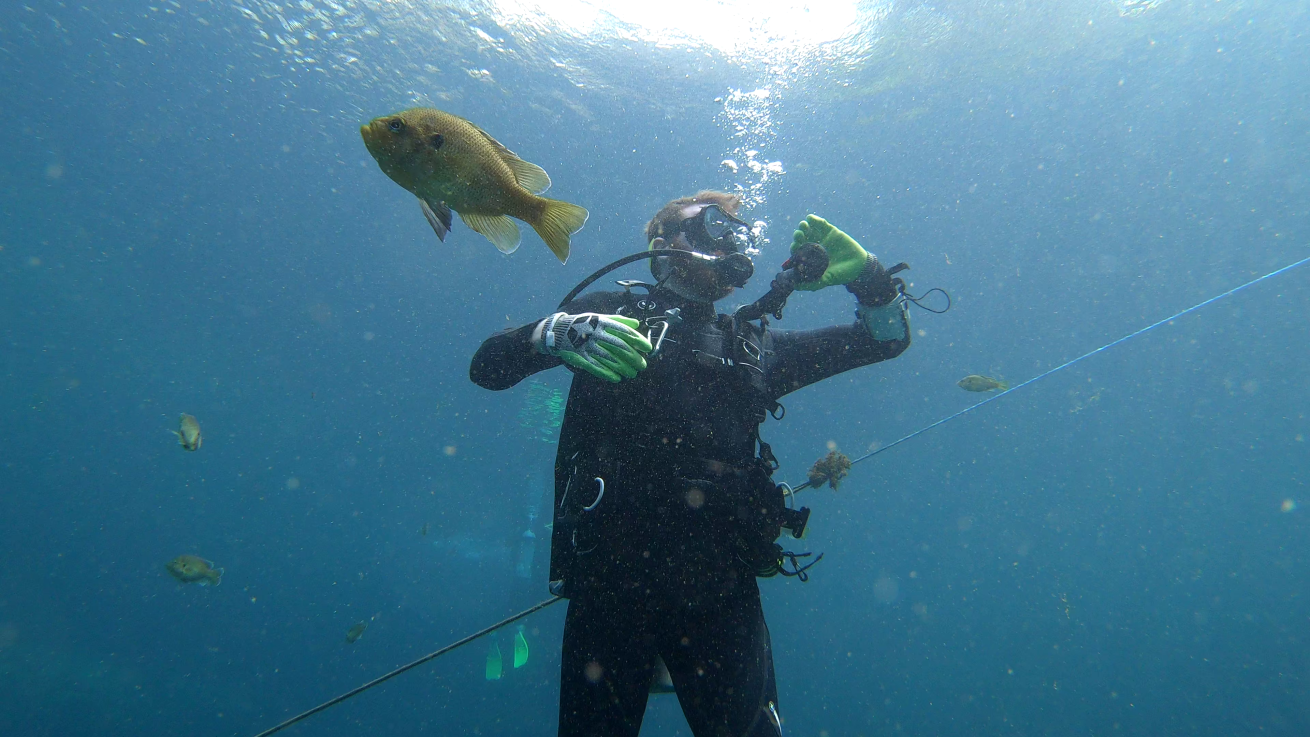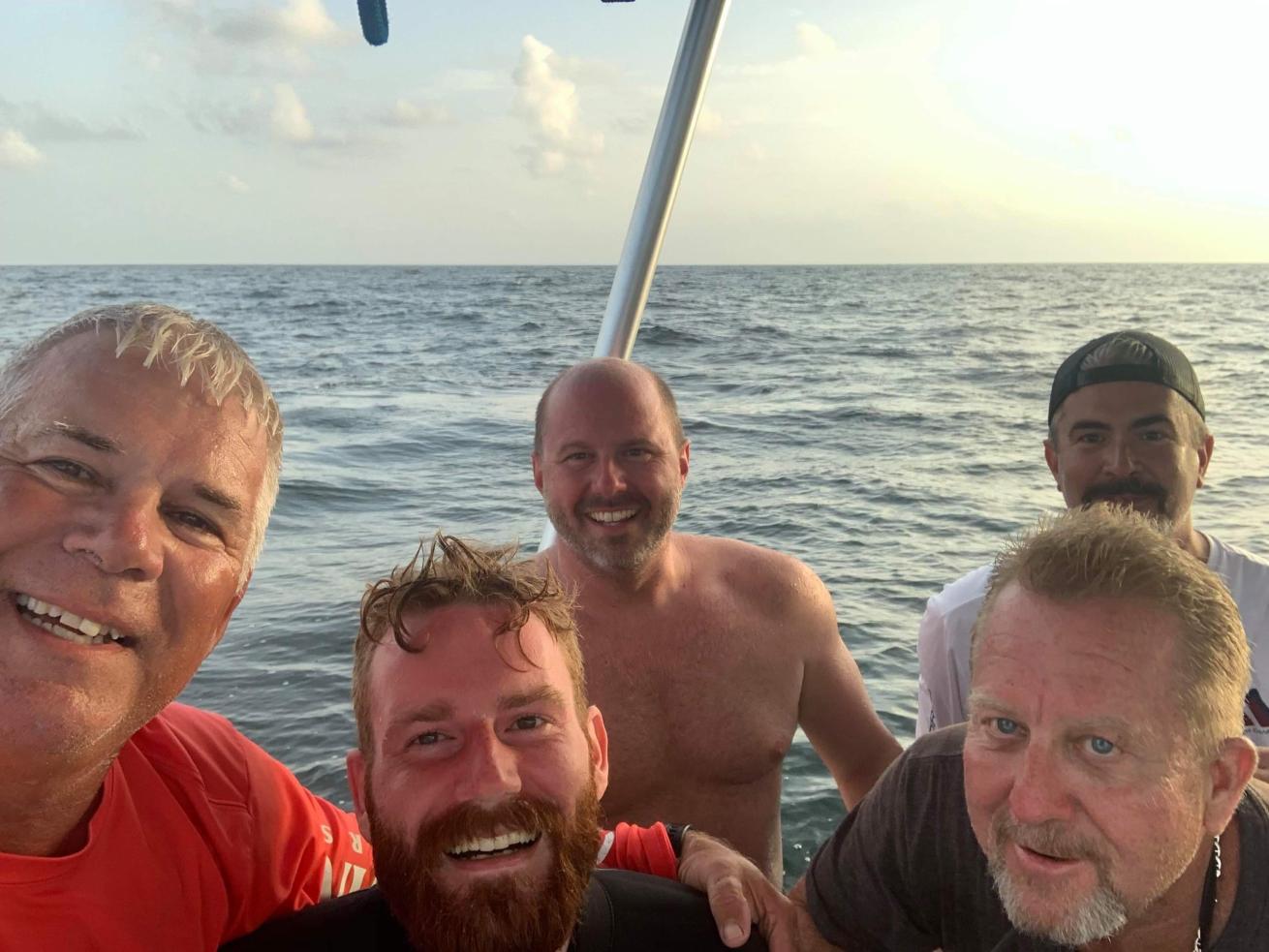Tips From a Diver Who Was Lost at Sea for Nearly Eight Hours
Michael Ozburn realized almost immediately that he had a problem. Upon descent, he had too much air in his BCD and could not keep up with his buddy while doing a negative descent—16 miles offshore Pensacola, Florida. By the time Ozburn resurfaced, he had already drifted almost 150 yards from the unanchored boat.

Courtesy Michael OzburnOzburn enjoying a dive at Blue Grotto springs.
Despite the situation, Ozburn remained calm and immediately inflated his surface marker buoy at the surface. He started waving his arms and blowing the whistle attached to his BCD. But in the 3-foot seas, the boat captain was unable to make out Ozburn’s lime-green SMB.
Ozburn later found out his buddy searched the dive site and surfaced when he couldn't find Ozburn, but because Ozburn wasn't on the boat, everyone assumed he must still be underwater somewhere. The captain sent two divers down to look for him, and after they surfaced without Ozburn the crew called the Coast Guard and began a search pattern to look for him.
For more than seven hours that day late last June, Ozburn floated in the Gulf of Mexico, where he says, “At first when the boats would go by or a helicopter was overhead and not see me, I figured, that’s OK, I’ll get the next one’s attention.” But after hours of floating with no land in sight, he was beginning to get antsy.
At one point, Ozburn says, he was greeted by three or four remoras, but it took a second glance to make the marine ID. At first he thought it was a group of sharks. He remembers thinking “this was going to be it.”
Ozburn recalls looking over at the captain’s GPS on the boat ride out and seeing 7 miles to go. He assumed they were planning to dive only 7 miles out, and it wasn’t until he was later rescued that he learned he was actually 16 miles offshore. Based on his assumption that he was only 7 miles away from shore, he calculated that, traveling 1 mph with fin kicks, he could get back to shore before nightfall. But after kicking for seven hours, it was clear he was nowhere near shore, and it was getting late in the day.
At last, Ozburn spotted another boat in the distance. “This was it, I had to get their attention,” he recalls thinking. With his broken whistle and 6-foot SMB, he began frantically waving, yelling and whistling to get the boat’s attention. He thought it was getting closer, but he kept yelling and waving until it reached him. Two men leaned over the boat and asked, “Hey, man. Do you want a ride?” The boat was a dive charter out of the same marina he had gone out of earlier that day. The crew had heard about the missing diver over the radio, and after finishing their dive day and dropping off their class at the marina, they geared back up and went back out to search for him. Ozburn says his rescuers went out to where he was dropped, tested the current in the area, did some math and searched for about 30 minutes until they found him.
“I didn’t really think safety was so important until something like this happened to me.”

Courtesy Michael OzburnOzburn, surrounded by his rescuers on the rescue boat after more than seven hours floating at sea.
Tips from a Diver Lost at Sea
I had the chance to speak with Ozburn over the phone, where he recounted this story and shared some of the lessons he learned, and what he would do differently next time. And there will be a next time, he says. “I’m actually going out this weekend with the same crew.”
• Be sure to empty all the air from your BCD if doing a live drop or making a negative-entry descent.
• It’s not a bad idea to consider a prescription mask or even laser eye surgery. Ozburn had a hard time seeing while drifting at sea because he did not have his glasses and doesn’t own a prescription mask.
• Make sure you have a fully functioning whistle attached to your BCD. Ozburn says his whistle had been crushed on a previous dive and he hadn’t had a chance to replace it. He thinks the whistle would have been louder if not previously damaged. Ozburn says he will definitely replace his whistle before his next dive.
• Consider adding an air horn, or Dive Alert, to your scuba kit. Ozburn thinks this might have been beneficial to catching the attention of passing boats.
• Think about the color of your SMB and where you plan to do most of your diving. Ozburn speculates that a pink SMB would have been easier to see than lime green, which he believes appeared white in the sun, blending in with the choppy seas he was diving in.
Ozburn’s incident highlights why it’s necessary to be prepared with the correct safety equipment. “I didn’t really think safety was so important until something like this happened to me,” he says.
ScubaLab will be testing safety equipment and signaling devices in 2020, so be on the lookout for upcoming reviews.










